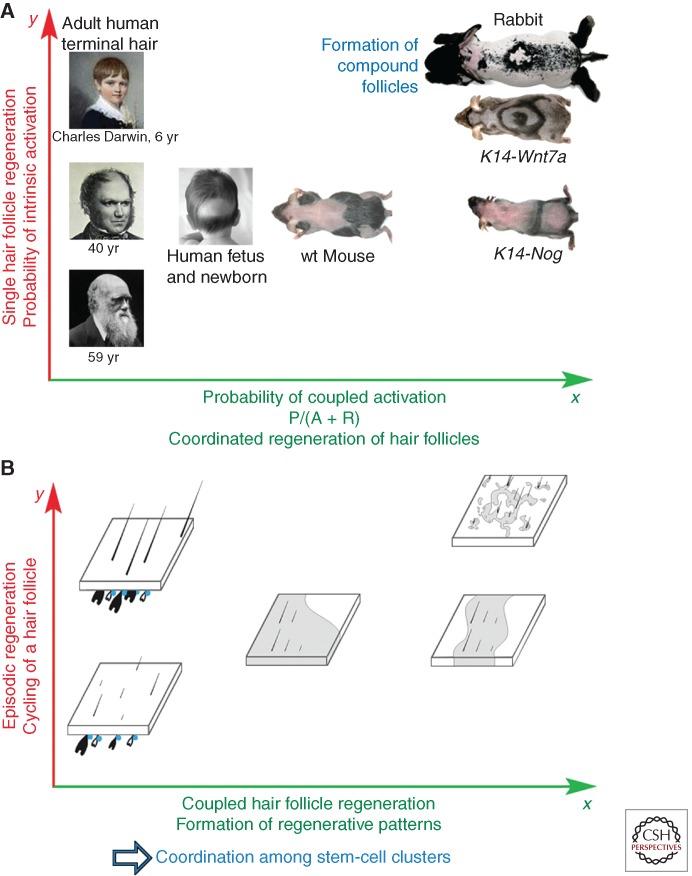Figure 5.
Adaptive evolutionary implications of coupled regenerative behavior in a hair follicle population. (A) Across the surface of the body, populations of HFs show a spectrum of regenerative patterns between different anatomical regions, different ages, or between different species (Cutrone and Grimalt 2005). Self-organizing mechanism of hair regeneration is highly adaptable and depends on the following evolutionary novelties: anatomical clustering of HF SCs (bulge SC clusters), development of cyclic mode of regeneration (hair growth cycle), regulation via macroenvironmental factors, including systemic body hormones. Activation of a single HF is shown in the y axis. Coupling of HFs in the population is shown in the x axis. With an intrinsic mechanism alone, HF regeneration can become easily deficient as seen upon alopecia (toward the left panel). Signal coupling between neighboring HFs enables robust hair regeneration even if the intrinsic probability of SC activation is low (toward the right panel). A wide spectrum of hair regeneration dynamics can be achieved upon modulation of the intrinsic and coupled SC activation mechanisms (from Plikus et al. 2011; reproduced, with permission, from the authors). (B) A more abstractive diagram showing HFs in different cycling states (anagen, telogen). Because of the coupling, HF SCs can become activated by the intrinsic, autonomous hair cycle clock (y axis). Robust self-initiated cycling is represented by high y value. The level of coupling between neighboring HFs is shown along the x axis, with less or no coupling on the left (human), and higher coupling on the right (from Plikus et al. 2011; reproduced, with permission, from the authors). This hierarchical organization of regulation enables HF populations to adapt to changing physiological or pathological conditions quickly by adjusting skin-wide hair regenerative dynamics. wt, Wild type.

